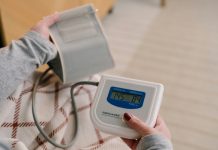
High blood pressure, also known as hypertension, is a silent health threat that millions of people face worldwide.
It’s like having too much pressure in your water pipes at home; over time, it can cause damage.
This condition doesn’t have loud or obvious symptoms, but it’s a major risk factor for heart disease and stroke, two leading causes of death.
The good news is that what you eat can have a big impact on your blood pressure.
Among various dietary approaches, the low-carb diet has been gaining attention for its potential benefits in managing high blood pressure.
A low-carb diet focuses on reducing the intake of carbohydrates, mainly found in sugary foods, pasta, and bread. Instead, it emphasizes foods high in protein and fat, along with vegetables.
This diet isn’t just about losing weight; it’s also about reshaping your eating habits to improve overall health. For those with high blood pressure, a low-carb diet might be particularly beneficial.
Research has started to shed light on how a low-carb diet could help manage blood pressure. Studies suggest that cutting down on carbs can lead to a significant reduction in blood pressure levels.
This effect is believed to be linked to weight loss, as excess weight is a known factor that increases blood pressure. Additionally, reducing carbohydrate intake may also improve other health markers, like reducing insulin resistance and inflammation, which are also related to high blood pressure.
One of the key points of evidence comes from a study where adults who followed a low-carb diet saw a notable decrease in their systolic and diastolic blood pressure.
Systolic pressure (the top number in a blood pressure reading) refers to the pressure in your arteries when your heart beats, and diastolic pressure (the bottom number) is the pressure between beats.
Both numbers are important, and improvements in these can reduce the risk of heart disease and stroke.
Moreover, a low-carb diet can also help in managing blood sugar levels and reducing insulin spikes, which is beneficial because high insulin levels can increase blood pressure by causing the body to retain sodium.
By focusing on nutrient-rich, lower-carb foods, individuals can enjoy a variety of meals without feeling restricted, while also working towards a healthier blood pressure.
It’s important, however, to approach a low-carb diet wisely. Completely eliminating carbs is not necessary or recommended, as certain carbohydrates are vital for your health.
Whole grains, fruits, and vegetables are examples of healthy carbs that can be included in small amounts. The key is balance and choosing carbs that are high in fiber and nutrients.
When considering a low-carb diet for blood pressure management, it’s crucial to consult with a healthcare provider, especially if you’re on medication for hypertension.
A sudden change in diet can affect your blood pressure significantly, and your medication might need to be adjusted accordingly.
In conclusion, managing high blood pressure with a low-carb diet could be an effective strategy alongside medication and other lifestyle changes.
By focusing on reducing carb intake and eating a balanced diet rich in vegetables, proteins, and healthy fats, you can take a proactive step towards controlling your blood pressure and improving your heart health.
Remember, the journey to a healthier heart begins with the food on your plate. Making informed dietary choices can lead to a significant positive impact on your blood pressure and overall well-being.
If you care about blood pressure, please read studies about unhealthy habits that could increase high blood pressure risk, and people with severe high blood pressure should reduce coffee intake.
For more information about blood pressure, please see recent studies that early time-restricted eating could help improve blood pressure, and results showing plant-based foods could benefit people with high blood pressure.
Copyright © 2024 Knowridge Science Report. All rights reserved.



